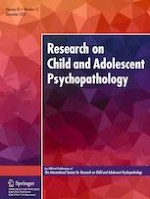01-09-2022
Conceptualization of Alcohol Use Disorder (AUD): Can Theoretical or Data Driven Approaches Improve the Construct Validity of AUD?
Gepubliceerd in: Research on Child and Adolescent Psychopathology | Uitgave 12/2022
Log in om toegang te krijgenAbstract
The Diagnostic and Statistical Manual of Mental Disorders 5 (DSM-5) definition of alcohol use disorder (AUD) has been criticized on the ground that it leads to high prevalence rates and a highly heterogeneous group. Failure of the DSM to consider development may exacerbate these issues (e.g., conflating experimentation with problematic drinking). Wakefield and Schmitz (2015) proposed a definition of AUD that comports to the harmful dysfunction (HD) theory of mental disorders while data-driven approaches have suggested that key symptoms like craving, failure to fulfill obligations, hazardous use, and alcohol use despite interpersonal consequences are optimal (OPT) criteria for AUD (Stevens et al., 2019). Prior work suggests both may reduce the likelihood of conflating experimentation with problematic drinking during key developmental periods. Continuous and categorical structural equation models of DSM, HD, and OPT criteria were compared on A) prevalence, B) patterns of alcohol use in adolescence (age 10–18 years) C) early AUD symptoms in adolescence (age 13–15) and D) concurrent alcohol use and alcohol consequences to assess prospective and concurrent convergent validity using a longitudinal design (N = 765; ages 10–21 years). Results supported prior literature that the HD and OPT criteria produced a smaller diagnostic class than the DSM. Furthermore, the HD and OPT criteria had larger and more consistent effects with validators than the DSM with the OPT criteria having the largest effects and the least criteria. Future work should consider whether the OPT or HD criteria better reflect AUD severity than the DSM across development.
